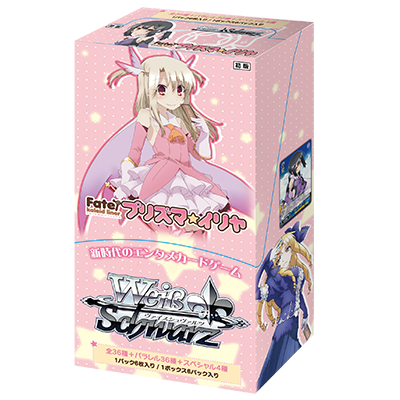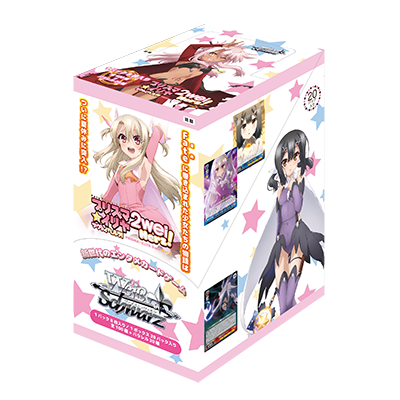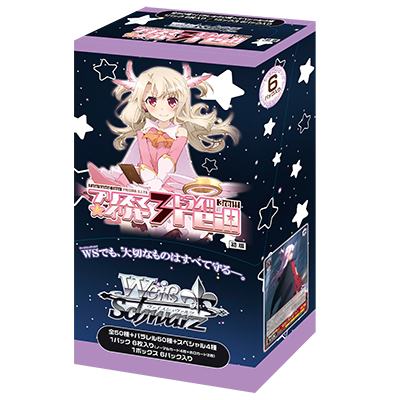Fate/kaleid liner Prisma Illya, more often shortened to Prisma Illya, is a spin-off of the more famous Fate franchise. Taking place in an alternative universe, Hiroshi Hiroyama writes a tale about an Illyasviel von Einzbern who is born into much more fortunate circumstances than that of her original self in the infamous Fate/Stay Night timeline. Illya began as a manga that came out in late 2007. Since then, it’s been animated into several anime series and a movie as well.
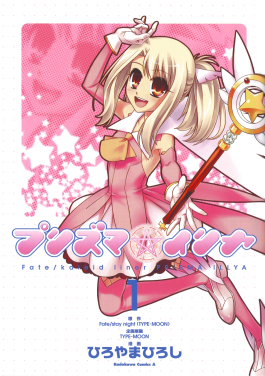

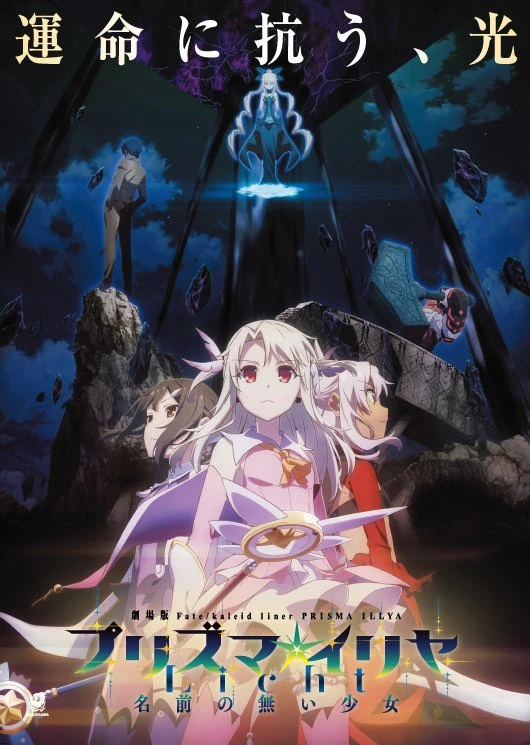
Anime Debut Poster (center)
Illya Licht Movie (right)
As mentioned before, Illya takes place in an alternative universe of Fate/Stay Night. Illya is now a young elementary school girl who stumbles upon a magical wand that changes her life entirely. After transforming into a magical girl, she meets the two girls, Rin and Luvia, who are magical academy students who offer her guidance while also introducing her to another magical girl named Miyu who is hiding her own secret.
Illya debuted in Weiss Schwarz in late December 2013. Illya used the EXPERIENCE [経験] mechanic that rewarded cards in her set for having higher level cards in the level zone. Additionally, Illya’s set introduced the arc trigger, a climax trigger that allows the player to salvage a climax from waiting room to hand when it is triggered. Following the first set, two years later, Illya received a sequel set featuring the second anime series, Prisma Illya Zwei, which added the mysterious girl Kuro. During mid 2016, Illya received even further support again with a full booster based around the third season, Prisma Illya Hertz. Another year passed by, and Illya received another extra booster with Prisma Illya Drei. Lastly, the final product of support came in with support featuring the OVA series, Prisma Illya Prisma Phantasm.
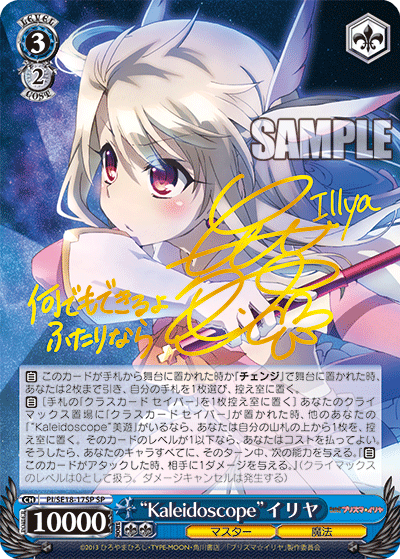
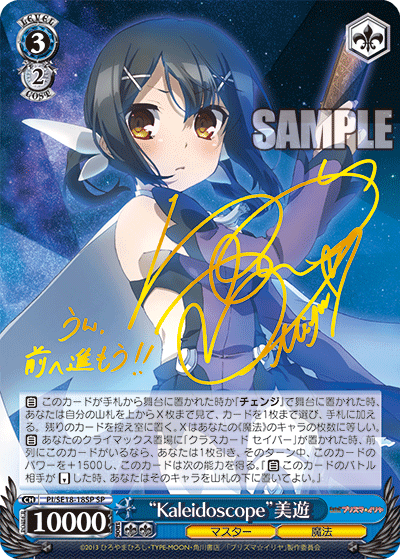
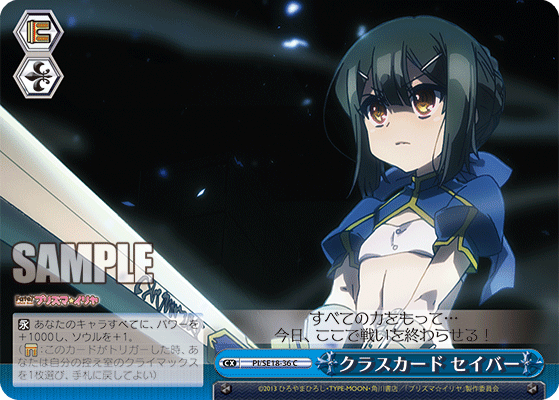
PI/SE18-18SP-SP “Kaleidoscope”美遊 (center)
PI/SE18-36C クラスカード セイバー (right)
The original Illya set was an old extra booster with a tiny card pool. There were a few cards with EXPERIENCE that mostly granted additional power effects. Most cards were mainly Magic (魔法) trait with a couple of other sub-traits. Whereas the majority of cards were blue, there were a handful of red cards that focused on Rin and Luvia, Illya and Miyu’s mentors. Those girls carried Gem (宝石) trait which is unique to them. The deck featured the infamous Kaleidoscope combo, a pairing of Illya and Miyu that has rather convoluted requirements that provide multiple shots of small damage if performed perfectly.

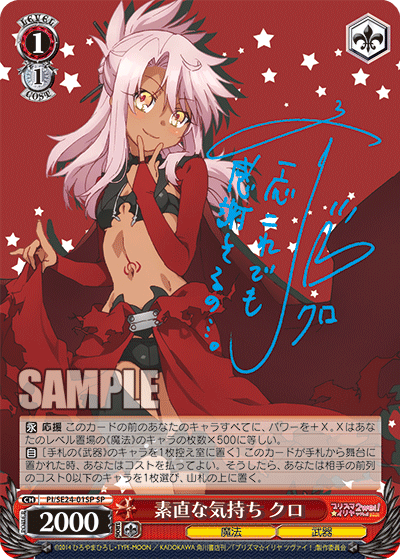

PI/SE24-01SP-SP 素直な気持ち クロ (center)
PI/SE24-03R スィーツバトル勃発! クロ (right)
Kuro shows up in Zwei. Kuro introduces the Weapon (武器) trait to the series. Zwei gave some more utility pieces to the series as a whole while also featuring some of Illya’s classmates in some of the cards. This was another small extra booster. It did carry a finisher that mirrored Kuro and Illya as alternative identities of each other. The infamous freefresh Miyu also comes from this set.
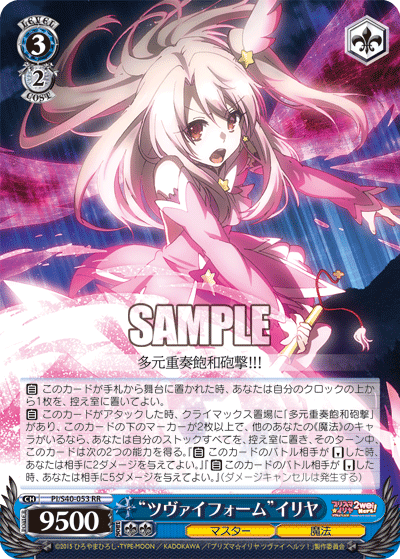
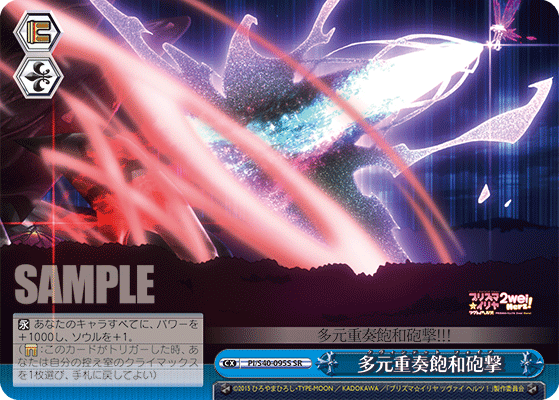
Hertz’ full booster gave Illya a whole new set of tools to work with. Illya received another specialized finisher. Similar to the other finishers of her past, Illya’s combo required quite a bit of set-up with other pieces to provide a strong finishing reward. Having at least EXPERIENCE level two was crucial to the deck’s early game functions, as it enabled abilities like Illya’s Akatsuki profile or Kuro’s level one reverser to function. Kuro also had some more support with her own soul reduction stall deck.
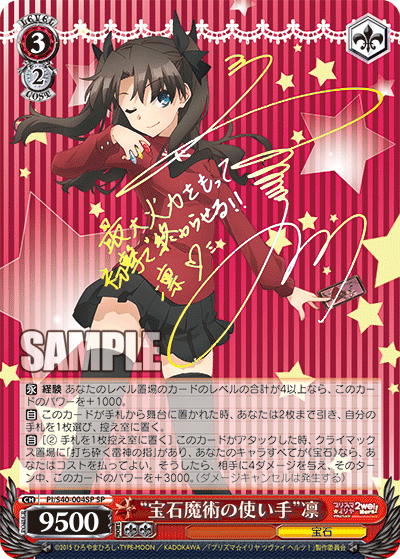


PI/S40-014S-SR “真夏のビーチ”ルヴィア (center)
PI/S40-046CR 打ち砕く雷神の指 (right)
Interestingly, the set gave much more support to Rin and Luvia, granting much more power to the Gem (宝石) archetype. Rin received a climax finisher as an example. Various filters and helpful card effects such as having healers, a brainstorm, and several other cards brought fresh life to Rin and Luvia’s deck.
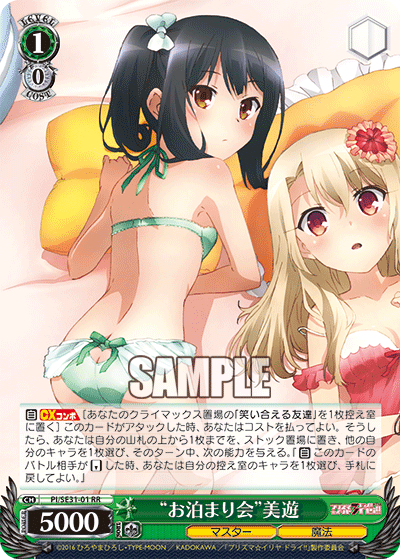
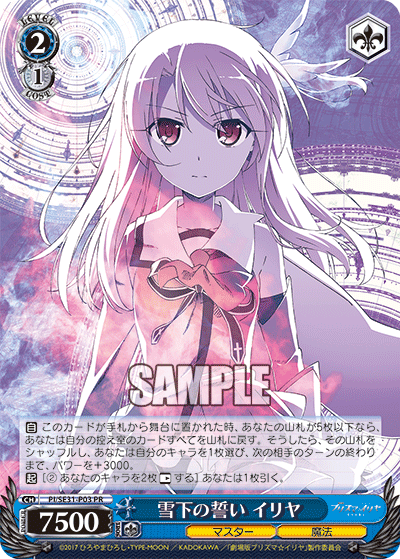
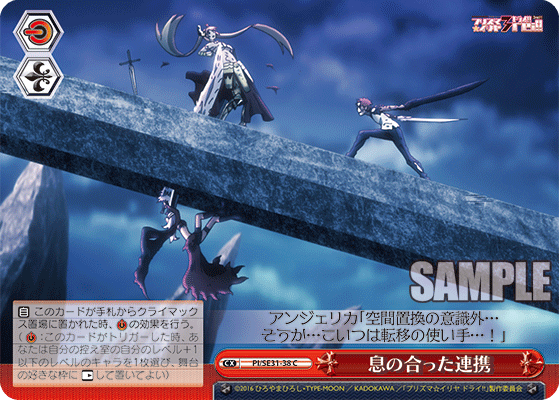
PI/SE31-P03PR 雪下の誓い イリヤ (center)
PI/SE31-38C 息の合った連携 (right)
Drei was an odd set. Drei was released after the premiere of the Illya movie, Vow in the Snow, a prequel to the series. The set introduced a third colour to the series (before, the only two colours were red and blue). Additionally, standby, a new trigger at that time, came to the hands of Illya.

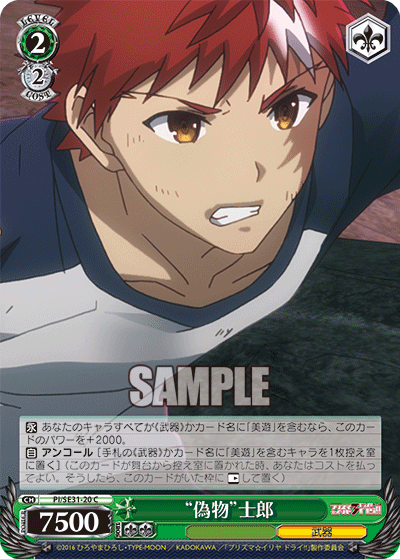

PI/SE31-20C “偽物”士郎 (center)
PI/SE31-38C 息の合った連携 (right)
Kuro’s weapon trait became significantly enhanced with the set. Shirou, who was mostly a side character in the previous sets, now carried the weapon trait as well, giving Kuro a partner to work with. Kuro’s new weapon deck was focused on spawning out big threats with her new standby trigger, usually, the 2/2 Shirou shown above. By paying her combo’s costs Kuro can stand him out, getting rid of the usual rest requirements that were there at this time. The finisher for the deck was a level three Shirou which revealed Kuro cards to use as weapons to modify the cancel burn punish he inflicted upon opponents.

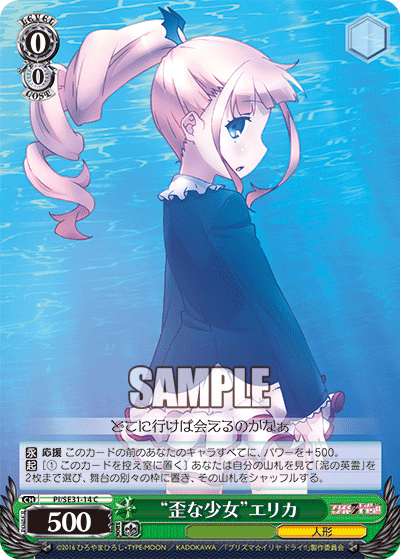
Additionally, at this time, Illya received its very own Army-style deck. The Mud Men had no limit on how many copies could be played. Furthermore, the Erika shown above could sacrifice herself to spawn two copies of them from the deck. There were many other support pieces such as that of the Julian who could change into his 2/1 form and refresh your deck while replacing himself with a draw.
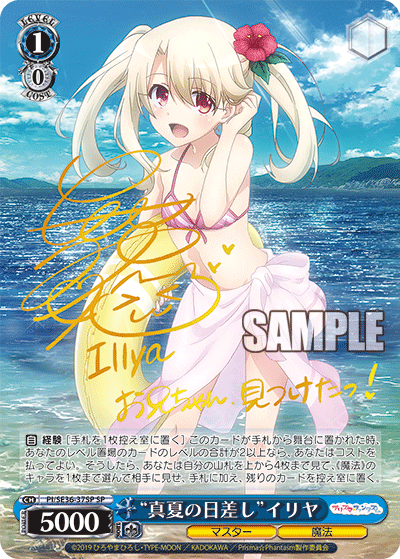
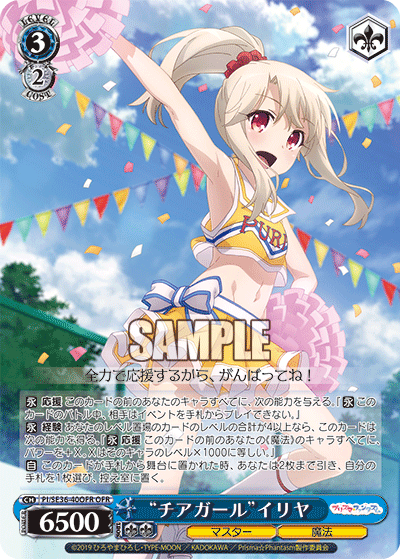
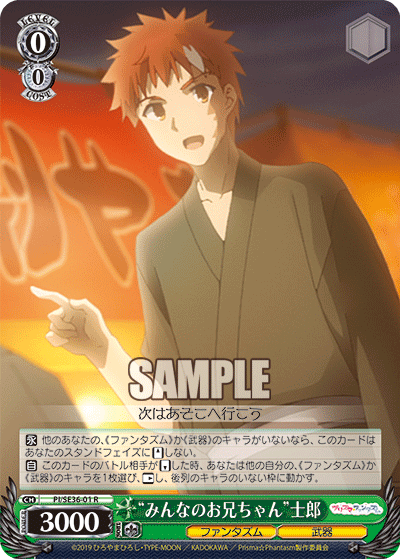
PI/SE36-40OFR-OFR “チアガール”イリヤ (center)
PI/SE36-01R “みんなのお兄ちゃん”士郎 (right)
The latest iteration of support for Illya is that of the Prisma Phantasm set. This set was quite interesting since it offered a bunch of functional reprints that could be played alongside their originals without the four-of rule clause. Additionally, the series gained yet another trait in Phantasm (ファンタスム) that was set exclusive.
Normally reprints under a different name carry that clause to prevent over-stacking of a single effect; however, a rare case was found with Illya where you could run them together with the original card, leading you to be able to run up to eight Akatsuki profiles. Additionally, these new prints, although functionally the same cards, ran by different names, letting you play around any named character abilities if need be.
If you enjoy the series and love the silly adventures that Illya and her friends go on, then this might be the set for you.
